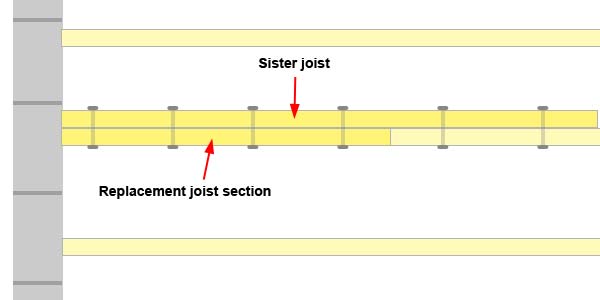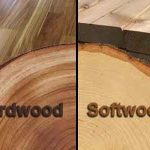Bouncy floors can be sightly worrying. After all, your floors should be solid, so when it moves under foot, this can be a cause for concern. But are bouncy floors really dangerous? Or is it a minor problem with an easy fix?
A bouncy floor can be dangerous. It is a sign that your floor joists are damaged and not providing support to the floor above.
By far the most common cause of bouncy floors, is rotten joists. This usually happens at the end of your joists where they meet the wall.
In most cases, this is a result of moisture entering the property from outside, saturating the ends of the joists. Over time, this will lead to rot, causing the joist ends to deteriorate.
At first, the joists may shrink as a result of the rot. This will cause them to move and bounce where they are housed into the wall or hanger. Later in the process, the joist end can completely deteriorate. When this happens, the joist will essentially be floating in mid-air, with no support below it.
This is really common in joists housed in external masonry walls. It happens when water penetrates through the masonry into the ends of the joists.
It can also happen in first floor timber joists, which are fitted above a damp crawl space. In this instance, water is able to rise from the ground below and soak into the joists. There is also a greater risk of water vapour and condensation
Whichever way it happens, this is a problem that needs resolving. The rot will usually affect more than one joist and if the damp persists it is likely to spread.
Basically, these joists are only supported by the floorboards connecting them to the stronger joists around them.
Fixing the cause of a bouncy floor
When dealing with a bouncy floor, it is very important to discover what caused the problem in the first place. There is no point fixing your rotten joists if the original problem persists. This will just result in your new joists sharing the same fate, and also suffering with rot.
For joist ends that are becoming wet and rotten, this is usually due to some external defect, allowing moisture to enter the property. In many cases, a visual inspection can be enough to find the problem.
You should look for bad pointing, broken bricks, damage to render or pebble dash. If you find an obvious problem, fixing it will usually be enough the stop water ingress.
If you are unable to find the issue, you will probably need to speak with a damp expert.
Click here to view damp proofing companies in your area
Damp crawlspace
If you have a damp crawlspace, and this is causing the problem, the solution will be slightly different.
For a shallow crawl space, with a dirt floor, ground water can be an issue. There are several ways you could deal with this, and most will require a professionals help.
- Install a vapour barrier of some kind – This would be a sealed vapour barrier such as a DPM. This would stop vapour and condensation from effecting your joists.
- Install a pump – If surface water is a big problem, some kind of pump system could be installed to remove water from the crawl space.
- Some form of air extraction or de-humidification – Again if water vapour and condensation are an issue, you can remove the moisture through some form of extraction.
- Check for DPC – A damp proof course should be present below first floor joists. If this is damaged or doesn’t exist, you may benefit from installing a new one.
All of the above problems are quite technical. You may also benefit from a combination of solutions based on your unique circumstances. Therefore, if in doubt, you should contact a damp specialist.
Most companies will provide a free survey. Therefore you can usually identify the problem without spending any money. Then, you have the option to hire someone to do the work or try do it yourself.
To arrange a free damp survey click here
Fixing the bouncy joists
Once you have resolved the cause of damp and rot, it is time to fix your joists.
In many cases, you will be able to cut back the section of rotten joist and leave the remaining healthy timber. Once you have done this, you can insert a piece of new joist the same length. To fix this in place, you can use a technique called sister joist. See image below

This can be good if you only have one or two joists to repair. Also, it can be a decent option if you can do the work from below.
In many cases simply replacing the joist/joists can be a better option, especially if your already removing floorboards. You need to figure out what will cost the most and what is the most work.
Both options will have the same result (a strong, rot free joist). Therefore you have to determine which will be the easiest and cheapest to do.
Whatever option you choose, it is highly advised that you spend a little extra money on pressure treated joists. This will ensure they have much better protection against future rot.
Conclusion
Bouncy joists can definitely be dangerous. If enough damage is caused, there is a very real chance of a section of the floor collapsing. This could result in serious injury. Not to mention considerable damage.
In most cases, a bouncy floor will be the result of rotten joists. To resolve this issue, you need to fix the cause of rot, and then replace or repair the effected joists (and potentially floorboards).
This problem is usually found at the edge of the room, where your floor meets the wall. If you have an issue in the centre of a room or you notice sagging in the floor, this could be a more serious issue. You can read more about sagging floors by clicking here




